Roast Pork Recipes
Who can say no to a delicious roast pork dinner with crunchy crackling and all the trimmings? We sure can't! A classic British favourite and the ultimate comfort food, you simply can not go wrong with a traditional pork roast. And the star ingredient? Specially Selected Pork from Scotland!
Come with us as we delve into the secrets of cooking the perfect pork roast recipe and we champion the outstanding quality of Specially Selected Pork for creating unforgettable dishes.
Pork is a versatile meat and roasting it is one of the easiest and most satisfying ways to serve it. From roast pork belly to pork shoulder roasts, pork chops infused with herbs and apples, pork tenderloin stuffed with prunes and even leftover pork roast sandwiches, it is hard to say no to this incredible meat.
Why Choose Specially Selected Pork?
When it comes to crafting the perfect roast pork dinner, the quality of the pork you choose is paramount. Specially Selected Pork by Make It Scotch stands head and shoulders above the rest.
Here is why Specially Selected Pork is the favoured choice for both home cooks and professional chefs alike:
Locally Sourced and Quality Assured
First and foremost, Specially Selected Pork is locally sourced, ensuring that the pork you are cooking is not only fresh but also supports local farmers and communities. This guarantees a shorter farm-to-fork journey, maximising the natural flavours and textures of the meat. Furthermore, each animal is quality-assured, adhering to strict standards of animal welfare and sustainable farming practices. This dedication to quality from farm to fork means that every slice of pork is tender, flavourful and of the highest possible quality.
Exceptional Flavour and Texture
The unique feed and care given to these quality-assured animals results in pork that is both succulent and rich in flavour. The texture of Specially Selected Pork is unique and celebrated all over the world. Whether you are aiming for crispy pork roast crackling on the outside or tender, fall-apart texture on the inside, this exceptional quality meat is perfect for a range of recipes, from a classic Sunday roast to more intricate gourmet dishes.
Health Benefits
Choosing premium pork also comes with immense health benefits. Premium quality pork is naturally rich in essential nutrients like protein, vitamins B6 and B12, and minerals such as zinc and iron. These contribute to muscle growth, immune system support and overall health. Additionally, the careful rearing process ensures that the pork is not only delicious but also a healthier choice for your family.
Preparing Your Pork: Tips and Tricks
Transforming a piece of pork into a mouth-watering roast takes a bit of practice but with some know-how and preparation, you can master the art of this old-time favourite.
Here are a handful of tips to help you prepare your pork for roasting:
Seasoning and Marinating:
- Dry Rubs: To achieve the classic crackling top on your roast pork, rub plenty of sea salt into the incisions on the skin. For a flavourful alternative, you can mix together herbs like rosemary, thyme, and sage with salt, pepper and a bit of brown sugar. Rub this mixture all over the pork, pressing gently into the cuts. The sugar caramelises during roasting, creating a delicious crust.
- Marinating: If you prefer a wet marinade, combine ingredients like apple cider vinegar, mustard, garlic and your chosen herbs. Marinate the pork for at least a few hours, preferably overnight, to let the flavours develop.
- Brining: For extra juiciness, especially in leaner cuts like the loin, consider brining the pork. Dissolve salt and a sweetener like honey or sugar in water, and dip the pork for several hours. This process helps to retain moisture during cooking.
Bring Meat to Room Temperature:
- Before roasting, it is crucial to let your pork sit out of the refrigerator for about 30 minutes to an hour to reach room temperature. This step ensures even cooking. Cold meat straight from the fridge often leads to roasts that are overdone on the outside and undercooked in the middle.
Herbs and Spices That Complement Pork:
- Rosemary, sage, garlic and thyme are classic choices that pair wonderfully with pork. For a more robust flavour, consider adding smoked paprika or cumin.
- Fresh herbs and garlic can be inserted into small incisions made in the meat, allowing their flavour to infuse throughout the pork during cooking.
Scoring the Skin:
- If your cut of pork has skin on it, such as a pork belly or shoulder, score the skin with a sharp knife. This helps the fat render out and creates that sought-after crispy crackling. Be careful to only cut through the skin and fat, not into the meat itself.
Oiling and Salting the Skin:
- Right before roasting, pat the skin dry and rub it with a bit of oil and a generous amount of coarse salt. The oil helps to conduct heat, and the salt not only seasons the skin but also helps to draw out moisture, aiding in the crisping process.
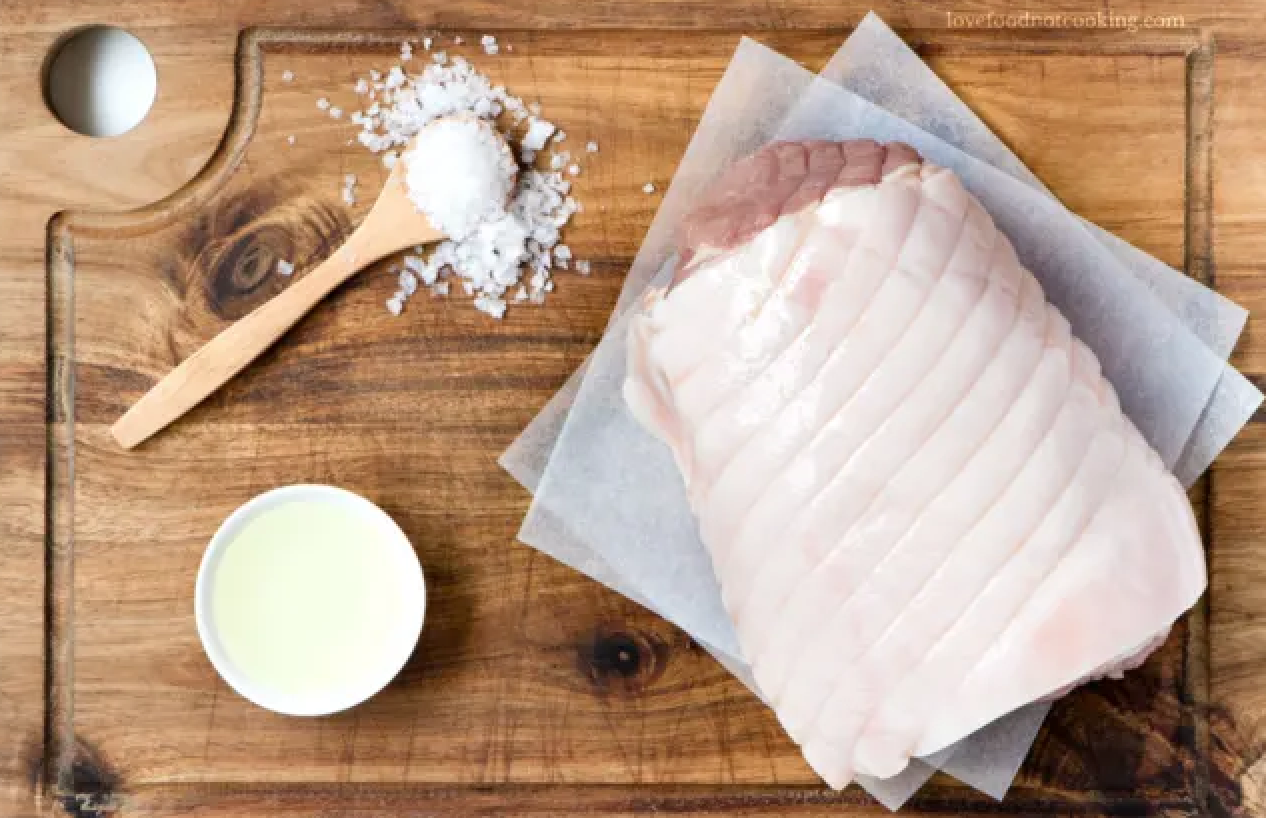
Remember, the key to a great roast starts with high-quality meat. Opting for Specially Selected Pork will give you a fantastic result every time.
Boneless Pork Roast vs. Bone-In Pork Roast: Which is Better?
When selecting pork for a roast, should you choose a boneless or a bone-in cut? Ultimately, the choice depends on your personal preferences and the specific recipe you are following. Both options have their unique advantages and can affect the flavour and cooking method of your roast.
Boneless Pork Roast:
- Convenience: Boneless roasts are generally easier to handle, carve and serve. Without the bone, you can easily cut the roast into uniform slices.
- Cooking Time: They typically cook a bit faster than bone-in cuts, as heat can penetrate the meat more directly.
- Marinating and Seasoning: Boneless cuts offer more surface area for marinades and rubs, allowing for deeper flavour infusion.
Bone-In Pork Roast:
- Flavour: Many chefs argue that cooking meat on the bone adds depth and complexity to the flavour. The bone can contribute to a richer, more robust taste.
- Moisture: Bones can help retain moisture in the meat during cooking, potentially leading to a juicier roast.
- Presentation: A bone-in roast can make for a more impressive and appealing presentation, especially for special occasions when you want to impress with your best pork roast.
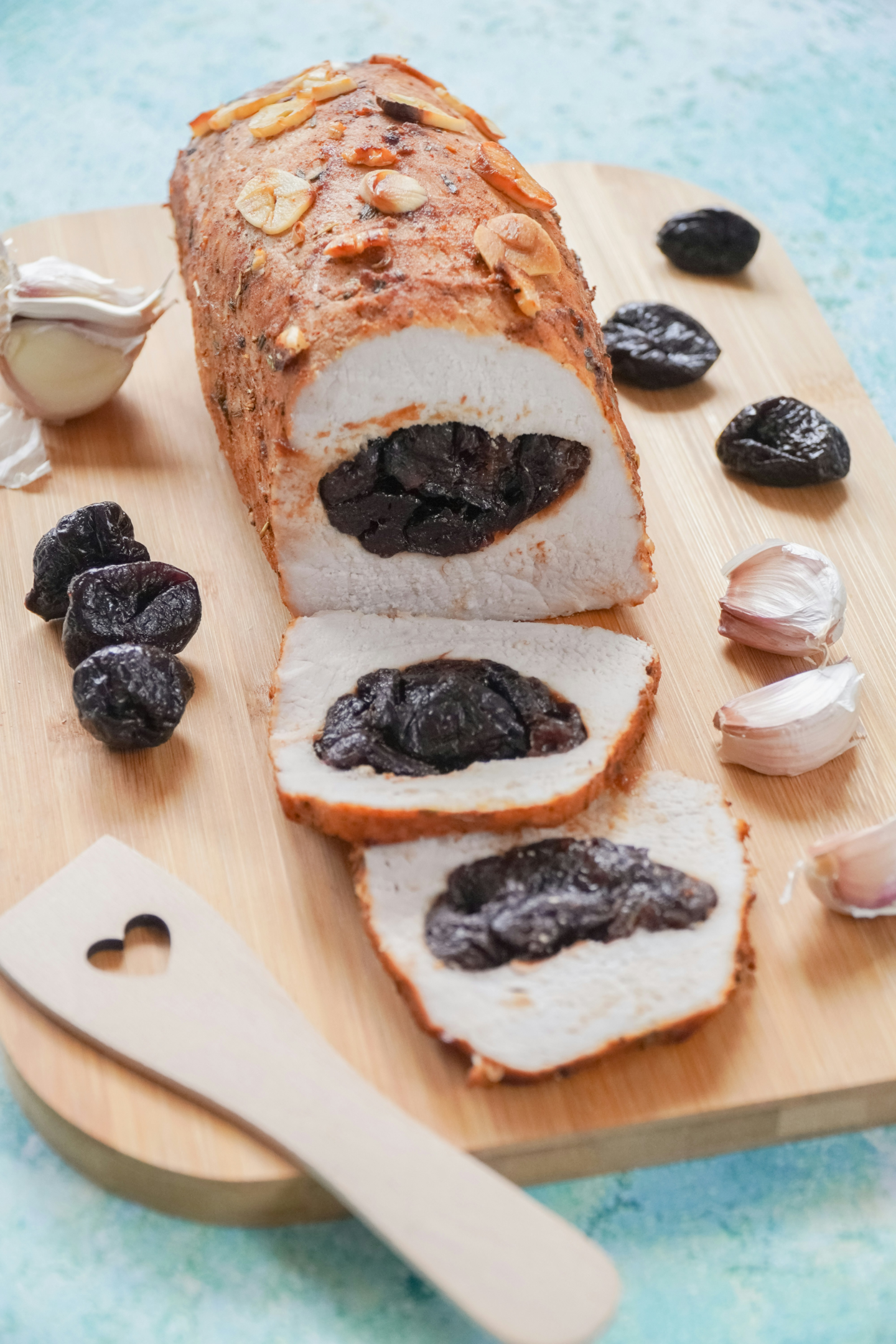
Roast Pork Recipes
Creating a delicious roast pork dinner is a relatively straightforward process, but it takes a bit of practice to perfect it. Here, we have chosen three recipes showcasing a different approach to achieving roast pork perfection.
Recipe 1: Classic Roast Pork with Crispy Crackling
Ingredients:
- 1 whole pork loin (or shoulder), skin on
- 2 tablespoons olive oil
- 2 tablespoons coarse sea salt
- 1 tablespoon black pepper
- 1 tablespoon rosemary, finely chopped
- 1 tablespoon thyme, finely chopped
Instructions:
- Preheat your oven to 220°C (430°F).
- Pat dry the skin side with a paper towel.
- Score the skin of the pork in a diamond pattern, being careful not to cut into the meat.
- Rub the pork all over with olive oil, then season generously with salt. You can also add pepper, rosemary and thyme if you like.
- Place the pork on a rack in a roasting tray. Roast for 20-30 minutes until the skin begins to bubble and crisp.
- Reduce the oven temperature to 180°C (355°F) and continue to roast for 30 minutes per 500g (1.1 lbs) of meat.
- Check the internal temperature with a meat thermometer – it should read 71°C (160°F) when done.
- Rest the pork for 15-30 minutes before carving.
Tips for Perfect Crackling:
- Ensure the skin is extremely dry before seasoning. Use paper towels to pat it dry.
- Score the skin deeply enough to let the fat render out.
- Don’t be shy with the salt – it draws out moisture and aids in the crisping process.
- Start at a high temperature to kick-start the crackling process, then lower it to cook the meat through.
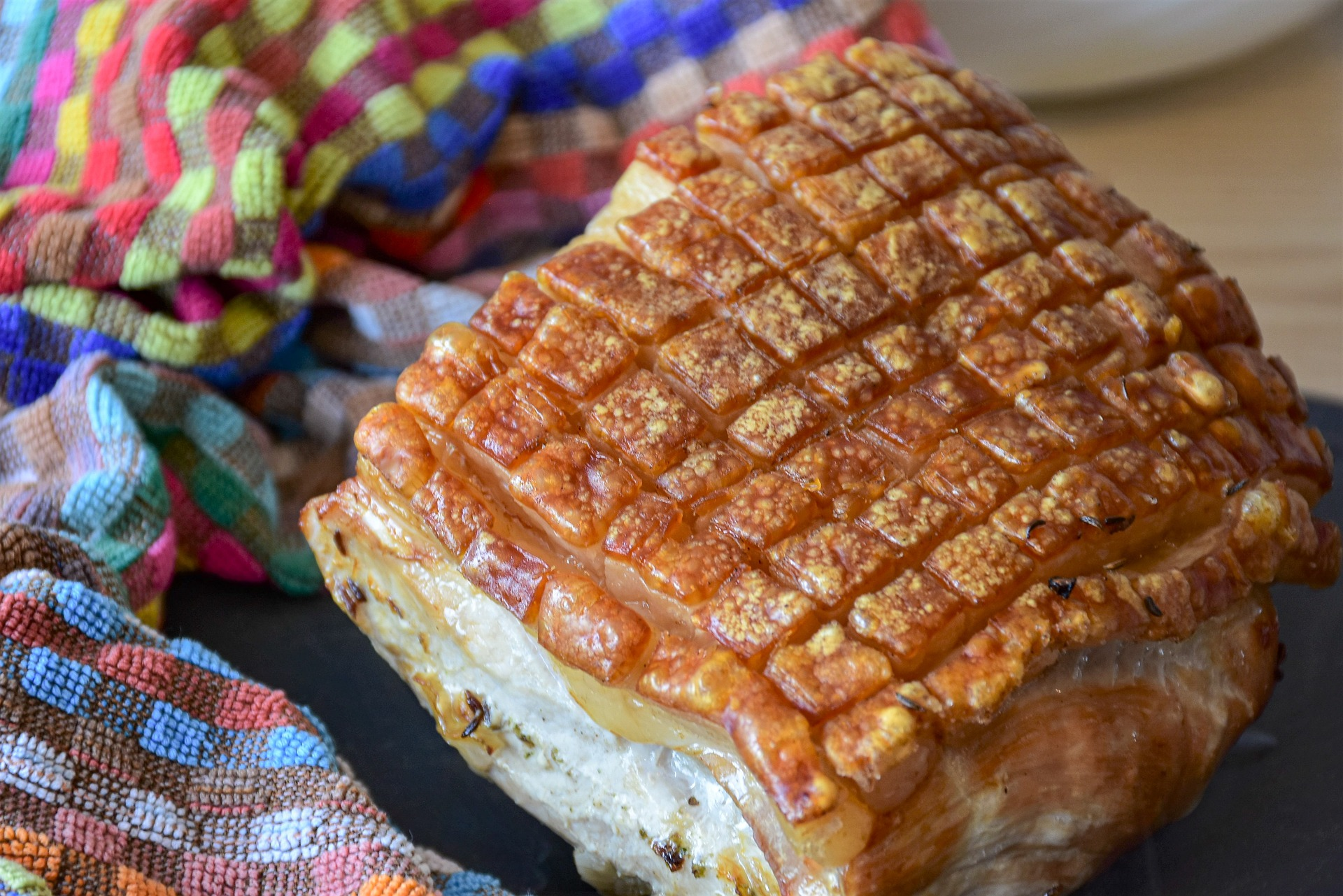
Recipe 2: Herb-Infused Pork Roast
Ingredients:
- 1 pork leg
- 2 tablespoons olive oil
- 1 tablespoon sage, chopped
- 1 tablespoon rosemary, chopped
- 2 cloves garlic, minced
- Salt and pepper to taste
- 1 cup white wine (or chicken stock)
Instructions:
- Preheat the oven to 180°C (355°F).
- Mix olive oil, sage, rosemary, garlic, salt and pepper to create a herb paste.
- Rub the herb paste all over the pork leg.
- Place the pork in a roasting tray and pour the white wine (or chicken broth) around it.
- Roast for about 35 minutes per 500g (1.1 lbs) of meat, or until the internal temperature reaches 71°C (160°F).
- Baste the pork with the pan juices every 30 minutes.
- Let the pork rest for 15-30 minutes before slicing.

Recipe 3: Slow-Cooked Pork with Apple and Cider
Ingredients:
- 1 pork shoulder
- 2 tablespoons olive oil
- 2 onions, sliced
- 2 apples, cored and sliced
- 2 cups apple cider
- 1 tablespoon Dijon mustard
- Salt and pepper to taste
- Fresh thyme
Instructions:
- Season the pork shoulder with salt and pepper.
- Heat olive oil in a large skillet and brown the pork on all sides.
- Place the sliced onions and apples at the bottom of the slow cooker.
- Put the browned pork on top of the onions and apples.
- Mix the apple cider and Dijon mustard, then pour over the pork.
- Sprinkle fresh thyme on top.
- Cook on low for 8 hours until the pork is tender and pulls apart easily.
- Rest the pork for a few minutes before shredding or slicing to serve.
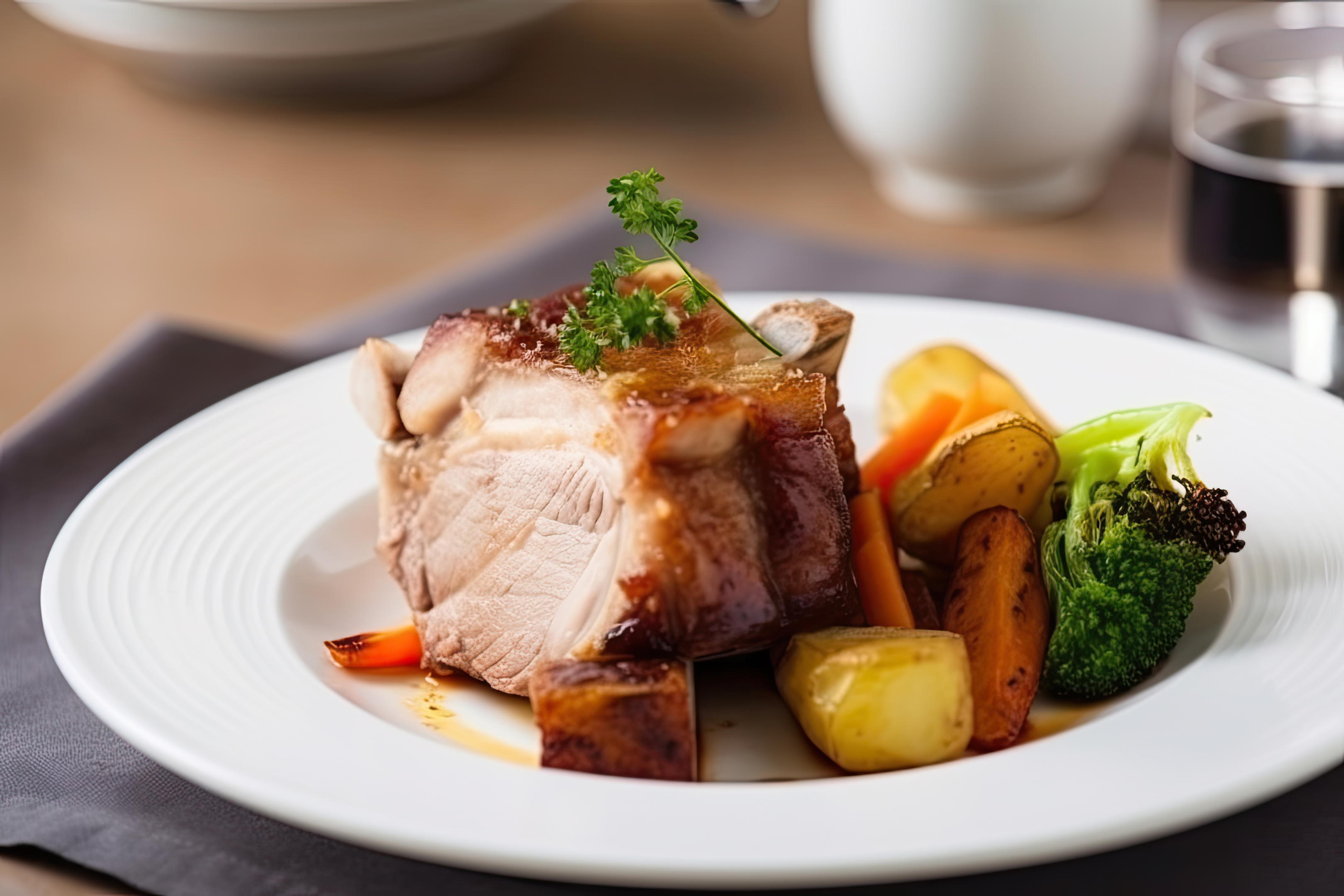
Pairings and Sides
The perfect pairings and sides can elevate your roast pork dish to a whole new level. Choosing the right accompaniments will turn it into an unforgettable meal.
Here are some suggestions for side dishes and drink pairings that beautifully complement roast pork.
Vegetable Sides:
- Roasted Vegetables: A medley of roasted root vegetables like carrots, parsnips and sweet potatoes, seasoned with herbs such as rosemary and thyme, makes for a hearty and flavourful side dish. The natural sweetness of these vegetables pairs well with the savoury pork.
- Braised Red Cabbage: Slowly braised red cabbage with a touch of apple cider vinegar adds a tangy contrast to the rich pork.
- Green Beans Almondine: Lightly sautéed green beans tossed with slivered almonds offer a crunchy, nutty side that complements the tender pork.
Starchy Sides:
- Creamy Mashed Potatoes: Smooth, buttery mashed potatoes are a classic side dish that provides a comforting element to the meal.
- Roast Potatoes: No roast dinner is complete without roast potatoes. Try roasting them in goose fat for that extra golden crunch on the outside, or add a spring of rosemary and garlic to infuse your roasties.
- Apple Sauce: No roast pork is complete without a dollop of apple sauce. Its sweet and tart flavour profile is a perfect match for the savoury meat.
- Scalloped Potatoes: Layered potatoes baked in a creamy garlicky sauce add a luxurious texture and rich flavour to accompany the pork.
Drinks:
- Red Wine: A medium-bodied red wine like Pinot Noir or a Zinfandel pairs wonderfully with roast pork, complementing its richness without overpowering the flavours.
- White Wine: For those who prefer white, a Chardonnay or Riesling can offer a nice balance of fruitiness and acidity to cut through the fat of the pork.
- Beer: A malty amber ale or a slightly hoppy pale ale can also be a great match, especially with spicier pork dishes.
- Cider: For a more traditional Scottish pairing, a crisp apple cider can bring out the pork's natural flavours while adding a refreshing element to the meal.
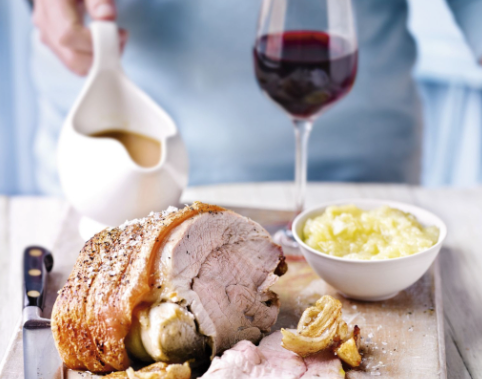
Where Can I Buy Specially Selected Pork Near Me?
If you have been inspired to get cooking and you are wondering where you can find our premium quality Specially Selected Pork, you are in luck!
With the help of our user-friendly map, you can now track down Specially Selected Pork in seconds near where you live. Simply enter your postcode, and the map will show you the nearest Scotch meat supplier in your vicinity. It is as simple as that!
Support Local Scottish Farmers
When you purchase Specially Selected Pork, you are also investing in a hardworking community of local farmers whose passion for traditional farming methods, quality assurance and environmental stewardship spans generations.
These local heroes are champions of quality and sustainability. They are committed to upholding the highest quality standards and excellence that sets the Scottish red meat industry apart around the world.
What's The Scotch Difference?
Let us take you on a journey into what makes Scotch Beef, Scotch Lamb and Specially Selected Pork so special, and how we produce such high-quality meat renowned and enjoyed worldwide.


- © MakeitScotch 2025
- Cookies
- Privacy
- Terms of Use
Site by Art Department
